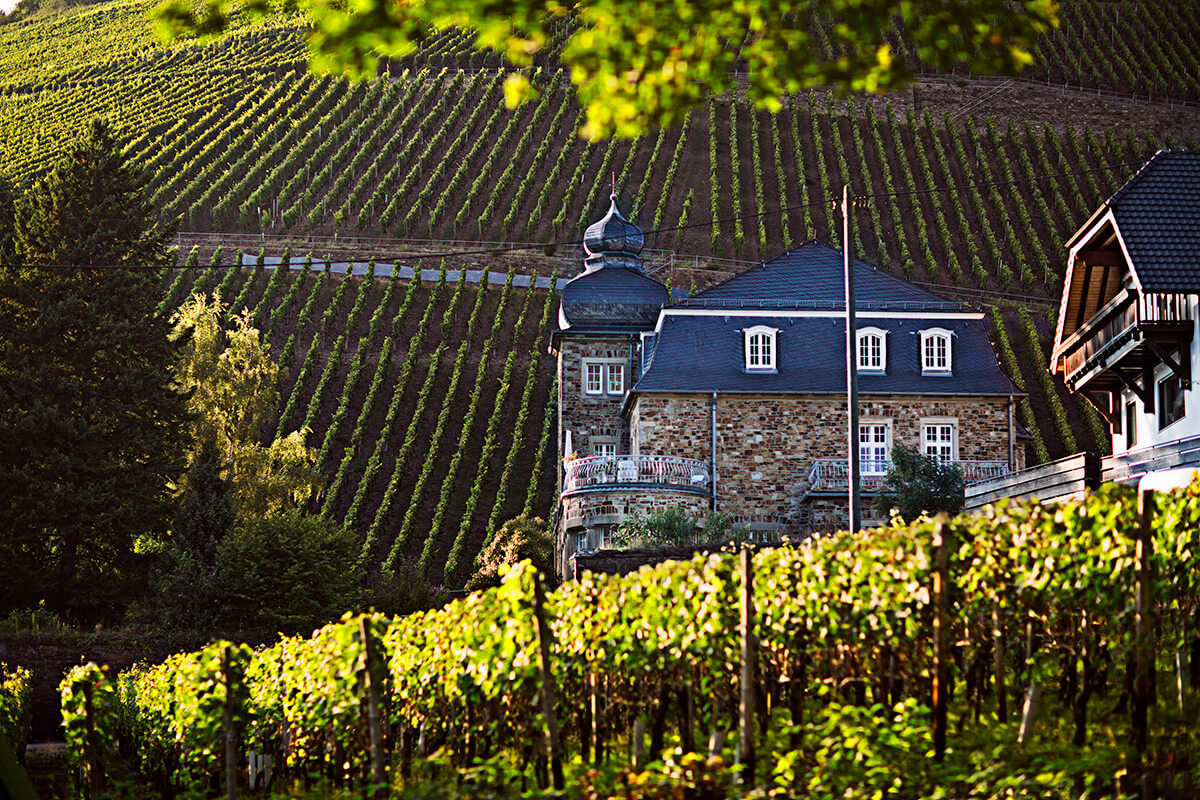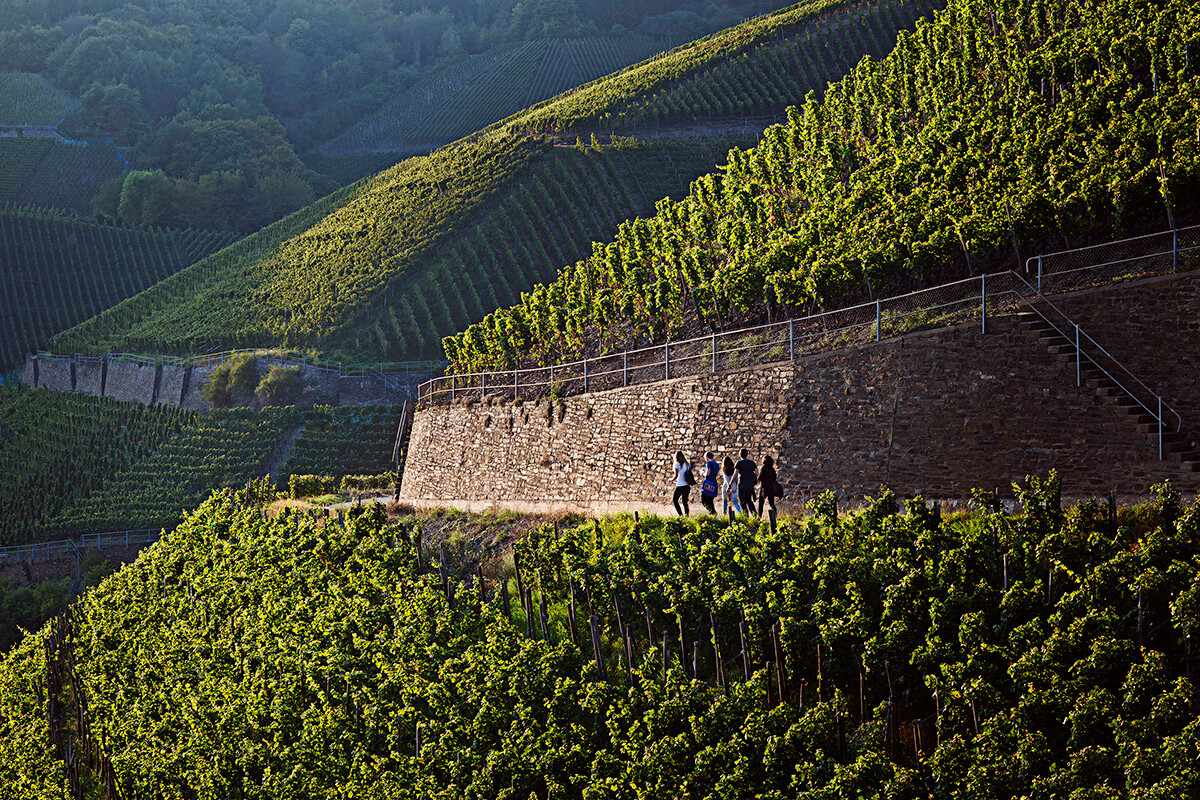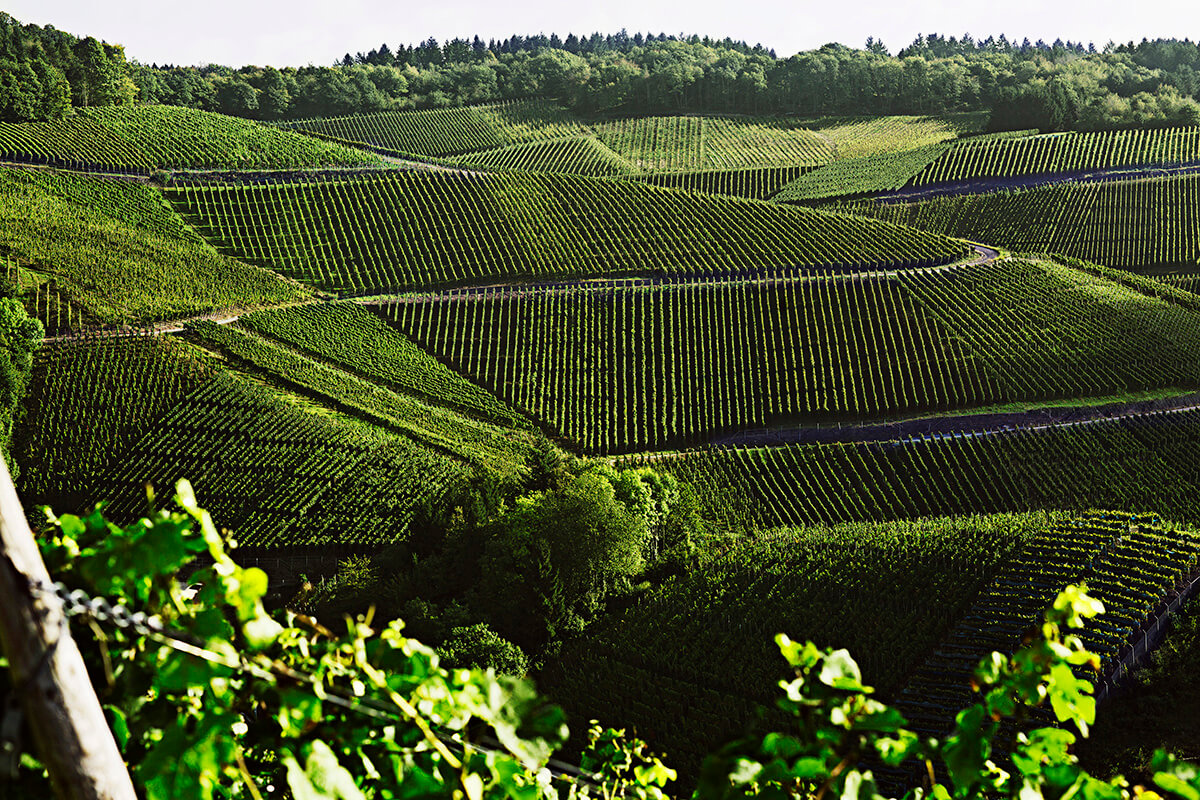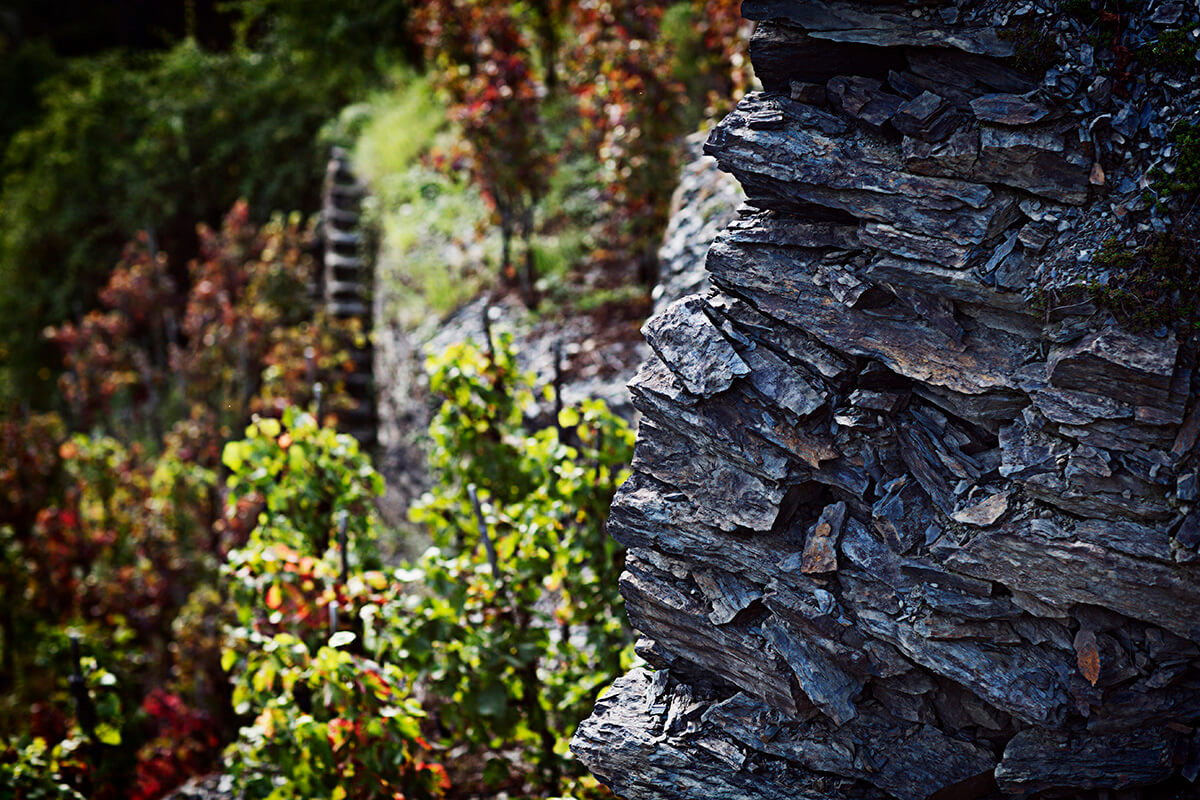Introduction
The Ahr is one of Germany’s northernmost wine regions. It is also one of the smallest, with vineyards extending only about 15 miles along the Ahr River as it flows toward the Rhine just south of Bonn. Four out of five bottles of Ahr wine are red — velvety to fiery Pinot Noir and light, charming Portugieser dominate. Dedicated Ahr vintners often have to climb craggy slopes to reach the many small terraces planted with only a few vines, where stony soils absorb warmth.
Statistics
Major Town: Bad Neuenahr-Ahrweiler
Districts: 1
Collective Sites: 1
Individual Sites: 39
Vineyard Area: 563
Terroir
Climate
– Mild and favorable
– Very hot and humid in the steep sites
– Precipitation is relatively low
– Warmth generated by the Gulf Stream reaches the Ahr and helps temper the climate
– Greenhouse-like in some of the steeper sites
Soil
Deep, rich loess in the lower Ahr Valley (eastern portion); slate, volcanic stone and rocky soils in the middle Ahr Valley (western portion).
Top soil types: Loess Slate Volcanic stone Rocky soil
Terrain
Located in the northern portion of the state of Rheinland-Pfalz, the Ahr is the northernmost wine region in the western part of the country. Vineyards in the Ahr Valley are protected from harsh, cold winds by the Eifel Hills. From Altenahr, in the west, to the spa Bad Neuenahr, the vines are perched on steep, terraced cliffs of volcanic slate. In the broad eastern end of the valley, the slopes are gentler and the soils are rich in loess.




